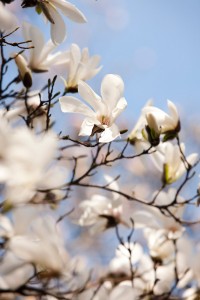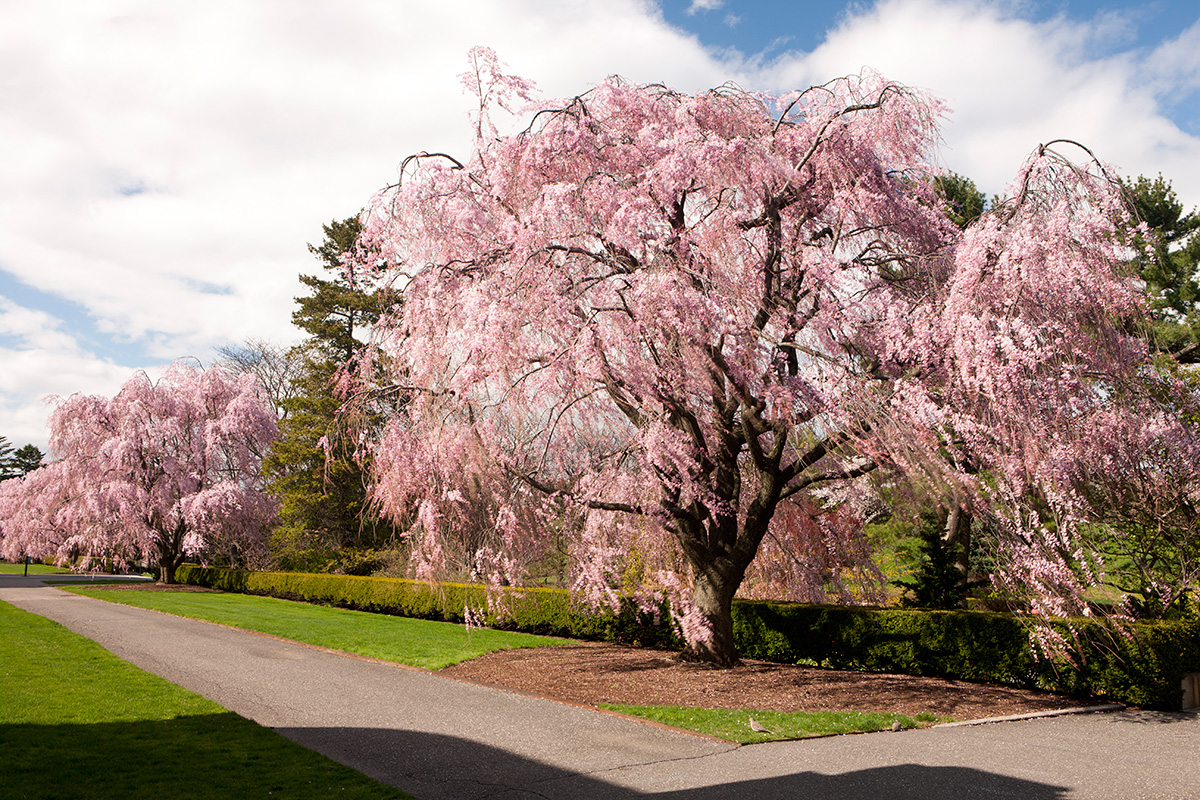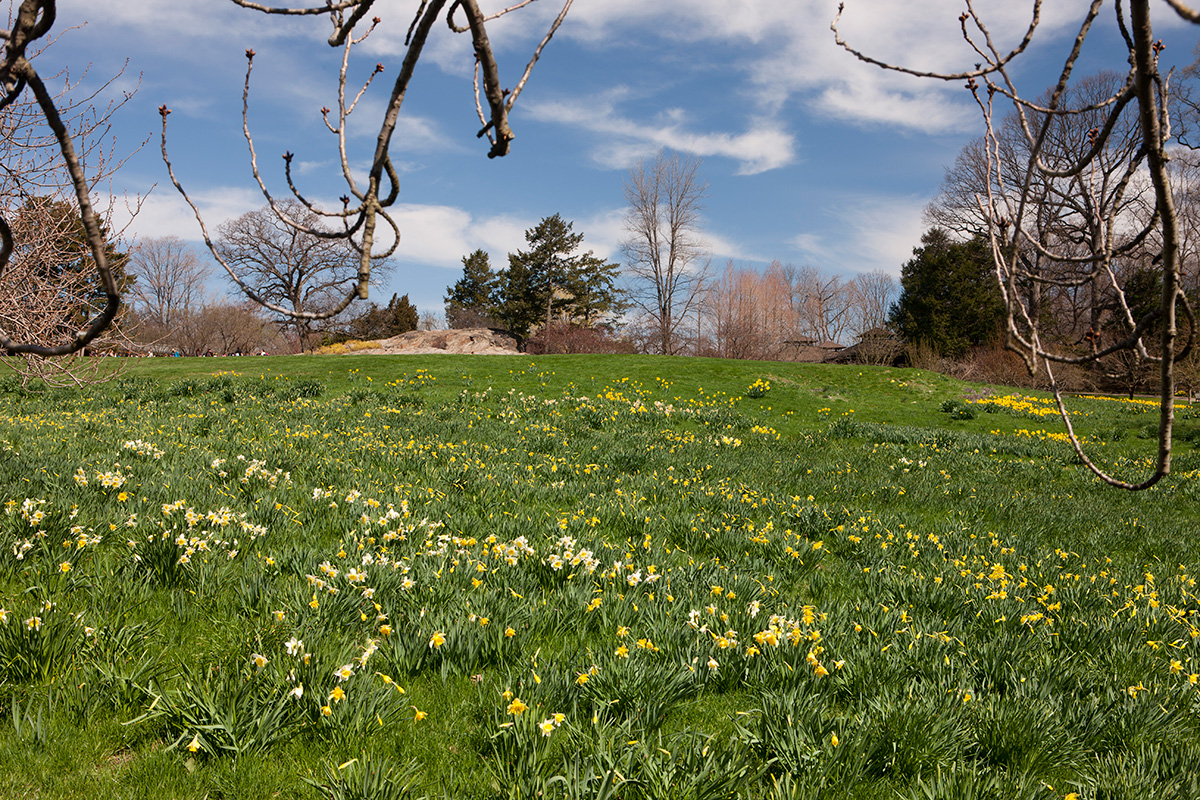As Summer Awaits, A Scientist Ponders Springtime at NYBG
Posted in Interesting Plant Stories on June 18, 2015 by Gregory Plunkett
Gregory M. Plunkett, Ph.D., is Director and Curator of the Cullman Program for Molecular Systematics at The New York Botanical Garden.

What a pleasure it is to stroll through The New York Botanical Garden, especially during springtime. The landscape varies from hills to low places, from exposed vistas to the isolation of the ancient Thain Family Forest. Then there are the textures: deep rich soils, jagged bark, scoured bedrock outcroppings, and wide flat lawns. And throughout this season, it has been impossible to ignore an explosion of color—carpets of yellow daffodils, spires of white magnolias and pink cherries, and the deep purples of grape hyacinths—all set against the backdrop of the vibrant spring-greens of the renewed trees and grasses. Simply amazing.
But there’s more than one way to look at the Botanical Garden and the beauty of the plant world. In part, that’s what the Garden’s scientists do every day.
To understand this better, consider what it is like to stroll through a great art museum, such as the Louvre in Paris. Like the Garden, the Louvre is filled with great treasures for the eyes. The museum itself provides the great landscape, through which we can appreciate the various textures, ranging from the hard stone of Greco-Roman statues to the soft canvases of Renaissance paintings, the pliable wood of native arts, and the smooth, rich gold of the decorative arts. And like spring in the Garden, the museum is ablaze with color. In each gallery, we can experience this variety in landscape, texture, and color on a purely aesthetic level—truly one of life’s great pleasures.
But another approach is also possible. Let’s consider three movements in art history. The Renaissance artists sought to marry classical idealism with realism, perfecting the expression of form and perspective and wrapping them in brilliant color. By contrast, the Impressionists sacrificed one form of realism for another, in order to recreate our perception of light. Monet’s brushwork is more visible and heavier than Raphael’s, but somehow he better captured the essence of dawn or dusk, of dark shadows and brilliant sunlight. Then there is the post-impressionistic Pointillism of George Seurat. Here, brush strokes disappear entirely, and in their place are thousands of tiny dots that converge to provide a delight of color and light and only an illusion of form. Beneath the pleasure of viewing a Da Vinci or Monet or Seurat, there is a technique that was applied. If we understand that technique, we can gain a greater appreciation of the artwork. It detracts nothing from the aesthetic experience but instead adds a new avenue to enjoy it.

And so it is with botany. At NYBG, we have a staff of scientists dedicated to probing deeply into the amazing diversity of plant life. There are more than 400,000 species of plants on Earth, and we are trying to unlock the secrets of where and when these plants originated. We ask why some plants are found here in New York, while others are limited to tropical rain forests and others still to the arid deserts. And what accounts for all the differences in the shapes, sizes, and colors of all these plants?
At the Garden, we have some of the world’s greatest facilities and resources to answer such questions. The William and Lynda Steere Herbarium, for example, has 7.4 million dried plant specimens, and the data stored with each specimen records the date, location, and conditions of the places where each plant was collected. That data can then be used in conjunction with the Garden’s Geographic Information Systems (GIS) lab to help map out the distributions of the plants and compare them to environmental conditions, such as temperature, rainfall, elevation, and soil types. We can also trace these distributions through time, to learn if changes to global climate are causing shifts in where the plants live or changes in when the plants produce flowers or seeds. We can use the same information to return to original collection sites, whether in Westchester County or the Amazonian rain forests. Once relocated, we can sample DNA from those plants and bring it back to the Garden’s Pfizer Plant Research Laboratory. There, we use the DNA as a source of information for building “family trees” of species relationships to understand the plants’ evolutionary histories and to discover which genes underlie the amazing variety of shape and size and color seen in the plant kingdom.

As I walk through the Garden’s grounds each week, not only in spring but in every season, I think about all the ways that Garden scientists are increasing the world’s understanding of plant diversity. Just like understanding the technique behind an artist’s approach to painting, our scientists’ discoveries do nothing to diminish our enjoyment of the Garden’s beauty but only provide new ways to appreciate the astonishing complexities of the plant world.

